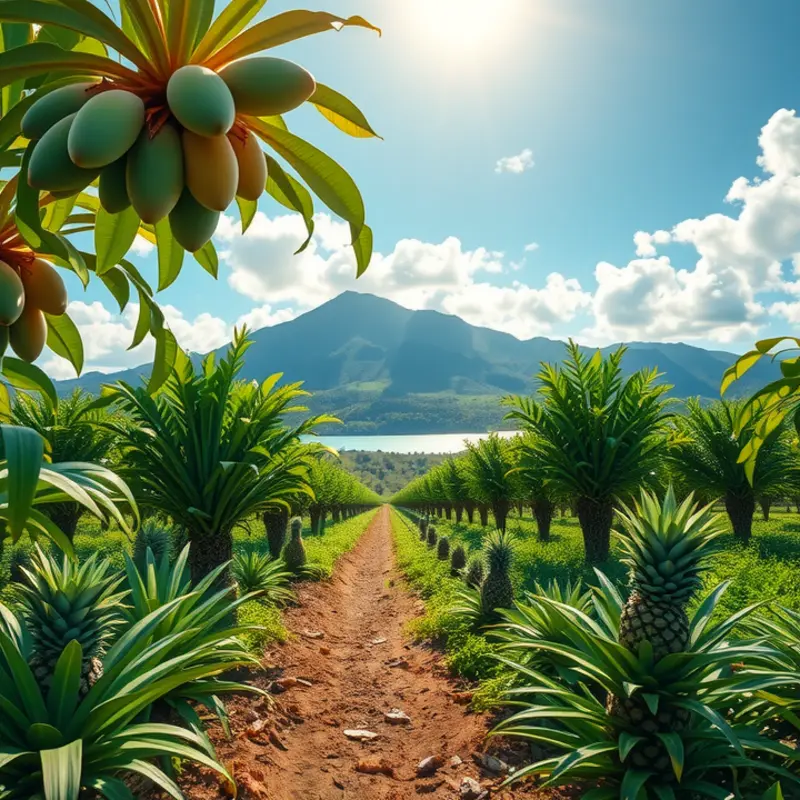Island cooking is a vibrant tapestry woven from the threads of history, geography, and community. Each island, isolated yet interconnected, has nurtured its own culinary identity, shaped by the surrounding seas and local agricultural practices. From the spicy curries of the Caribbean to the fresh sushi of the Pacific Islands, the flavors reflect the rich cultural diversity and natural resources unique to these regions. Dive into the traditions that define island cooking and explore how they transform simple ingredients into extraordinary dishes.
The Spice Islands: Culinary Legacies of the Caribbean

In the Caribbean, a tapestry of culinary influences weaves a vibrant and flavorful cuisine. Born from the convergence of indigenous practices, African traditions, and European techniques, the gastronomic identity of these islands is as diverse as it is bold. Unpacking this blend offers a deep dive into the past, highlighting the resilience and creativity of Caribbean people.
Centrally, the concept of “jerk” encapsulates the spirit of this cuisine. Invented by the indigenous Taíno people, jerk refers to a method of cooking meats with a characteristic smoky flavor. African slaves later transformed this method with spices like allspice and Scotch bonnet peppers, creating the fiery jerk chicken we know today. This dish exemplifies the adaptability and innovation central to Caribbean cooking.
Plantains are another staple that showcases the islands’ culinary heritage. A cousin to the banana, the plantain is a versatile ingredient used in both sweet and savory dishes. They can be fried into delicious tostones or boiled and mashed as mafongo. This ingredient’s origins can be traced to West Africa, and it remains a beloved component of island meals, revealing the deep African influence.
Equally iconic is “rice and peas,” a seemingly simple dish that carries profound cultural weight. Known for its harmonious mix of rice, kidney beans (or “peas”), coconut milk, and spices, this dish is a staple across islands, especially in Jamaica. The method of cooking rice with legumes hails from African traditions, while the infusion of coconut milk shows the influence of Indian indentured laborers who arrived in the Caribbean in the 19th century.
Behind each of these dishes lies a story of cultural exchange. The arrival of European powers introduced new ingredients like onions, garlic, and thyme, now essential to Caribbean cooking. Moreover, Indian and Chinese immigrants further enriched the islands’ culinary repertoire, contributing spices and techniques.
To sustainably enjoy the rich offerings of Caribbean cuisine, understanding and celebrating these cultural intersections is vital. Learning to incorporate bold spices and ingredients can enhance any food lover’s repertoire. For those intrigued by sustainable practices and culinary trade influences, an exploration of culinary influences from trade provides valuable insights into the evolution of Caribbean and global cuisines.
Thus, the Caribbean’s culinary legacy is a testament to human ingenuity—melding disparate influences into something uniquely its own. The resulting flavors and techniques tell stories of survival, resistance, and fusion, inviting us to savor every bite as a narrative of history and culture.
Harvesting the Ocean: Culinary Treasures of the Pacific Islands

The Pacific Islands are a vibrant tapestry of culinary traditions where the ocean’s bounty plays a pivotal role. For centuries, islanders have honed their cooking skills to transform the daily catch into flavorful feasts. Traditional methods like earth ovens and fresh sashimi showcase their ingenuity and deep connection to their environment.
Earth Ovens and Sashimi
One iconic cooking technique is the umu, or earth oven. This ancient method involves digging a pit in the ground, filling it with hot stones, and layering banana leaves for insulation. Fish, pork, and taro—each wrapped in more leaves—are carefully arranged inside. Slow-cooked in the earth’s embrace, the result is tender, smoky, and aromatic.
For those preferring raw preparations, sashimi offers a delightful alternative. While Japan is famous for this delicacy, Pacific Islanders have their own versions. Freshly caught fish, thinly sliced, is served with coconut cream or citrus juices. The simplicity highlights the fish’s freshness, allowing diners to savor every bite.
Marine Connoisseurs
Island cuisine often showcases the catch of the day. Tuna, mahimahi, and parrotfish are common choices, each prepared using tried and true techniques. Grilling over open flames imbues the fish with a charred essence, while steaming in coconut cream enhances its succulence. The communal aspect of these meals is vital. Sharing harvests is as much about ceremony as sustenance.
Complementary Ingredients
To complement the oceanic offerings, islanders rely on local staples like taro, sweet potatoes, and breadfruit. These starchy foods, often grown in family gardens, offer balance to meals and absorb the flavorful juices of fish and meat. Coconut is another versatile ingredient, used both for its milk and as a cooking vessel. Its creamy richness enhances the flavors and provides additional nutrition.
Regional Specialties
Throughout the Pacific, distinct regional specialties emerge, shaped by geography and cultural exchanges. In Fiji, kokoda, a ceviche-like dish, features raw fish marinated in lime juice, mixed with coconut milk, onions, and peppers. Across Polynesia, poke, a dish of cubed raw fish, is gaining global popularity. Preparing it involves selecting fresh herbs and seasonings to suit the palate.
Cultural and Communal Significance
Cooking in Pacific Island societies is more than sustenance; it’s a cornerstone of cultural identity. Food preparation often involves the entire community, with roles defined by tradition. Elders pass down recipes and techniques to younger generations, ensuring continuity and respect for nature’s provisions.
For those interested in exploring sustainable fish practices, understanding the roles and responsibilities within island cooking is essential. This connects with global efforts in eco-friendly food storage and techniques that minimize waste, as seen in this resource on low waste cooking.
The culinary practices of the Pacific Islands are a profound testament to adaptability, respect for nature, and communal harmony. The emphasis on the sea not only satisfies hunger but also celebrates a way of life deeply tied to the ocean’s rhythms and bounty.
Final words
Island cooking traditions reflect a rich cultural heritage, merging local ingredients with diverse influences to create remarkable flavors. Each dish tells a story of the people, their history, and their close relationship with nature. By embracing these culinary practices, food enthusiasts can celebrate the art of cooking that is rooted in tradition and nurtured by community. Whether you’re enjoying a spicy Caribbean stew or savoring fresh sushi from the Pacific, exploring these island cuisines offers a delicious journey across the globe.








